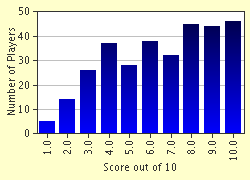Quiz Answer Key and Fun Facts
1. One of the oldest (and most common) forms of Church Music is the Mass. The Proper Mass consisted of those portions which changed from day to day, while the Ordinary Mass used the same text on all occasions. Which of these movements was contained in the Ordinary?
2. The Mass for the dead is similar in structure to the standard Mass, but often omits one or more movements and adds a "Dies Irae" portion. What is the Latin name for such a memorial mass?
3. A third type of (sometimes) sacred vocal work was championed by J.S. Bach. Containing multiple movements of arias, recitatives, and choruses, they were poetic narratives often set to the tunes of well known hymns. What name was given to these extended works?
4. Another type of music championed by Bach was a form where one or more main themes, or subjects, progressed through various voices in a contrapunctal texture. What name is given to such a piece?
5. Certainly one of the most musically complex classical forms is the symphony. The symphony originated as a three-movement work based on the Italian Overture. Around 1745 Johann Stamitz increased the standard length of an orchestra to four movements by adding what type of movement (typically the third played in a symphony)?
6. The sonata allegro form often featured prominently in symphonies, concertos, and, of course, sonatas. What is the typical ordering of the parts of a movement in this form?
7. During the 19th century, a new form of symphony arose. Instead of following a rigid form, the symphony would be based off of a work of art of literary work, the form molding itself to fit the music instead of the other way around. What name was given to such symphonies?
8. Operas also included some fixed forms of their own. One of these is an aria of three parts, where the third part is merely the first part repeated with some extra ornamentation thrown in. What name is given to such an aria?
9. As opera grew in popularity, it gradually split into several styles, based partly on nationality and partly on the content of the opera. What name was given to opera sung in Italian featuring heroic or tragic stories?
10. Finally, we turn to a form of music pioneered by Schubert and Schumann. What name was given to a German art song of the 19th century meant to be sung by solo singer with piano accompaniment?
Source: Author
kevinatilusa
This quiz was reviewed by FunTrivia editor
bullymom before going online.
Any errors found in FunTrivia content are routinely corrected through our feedback system.

